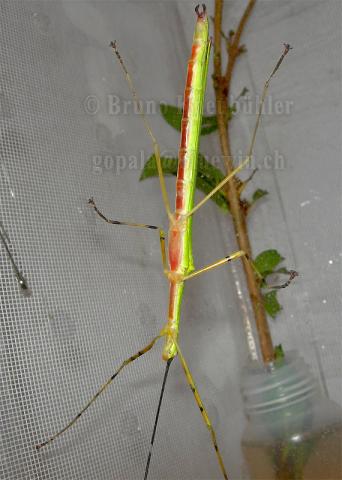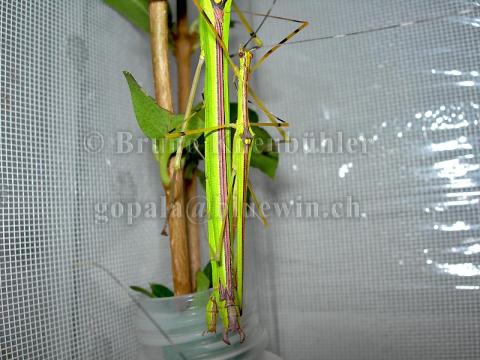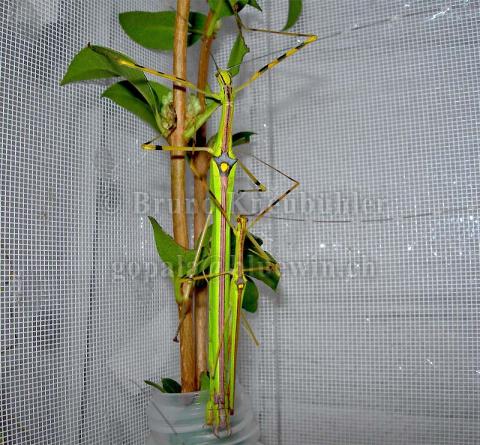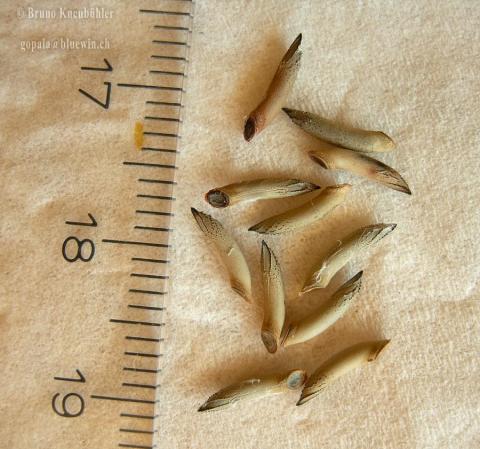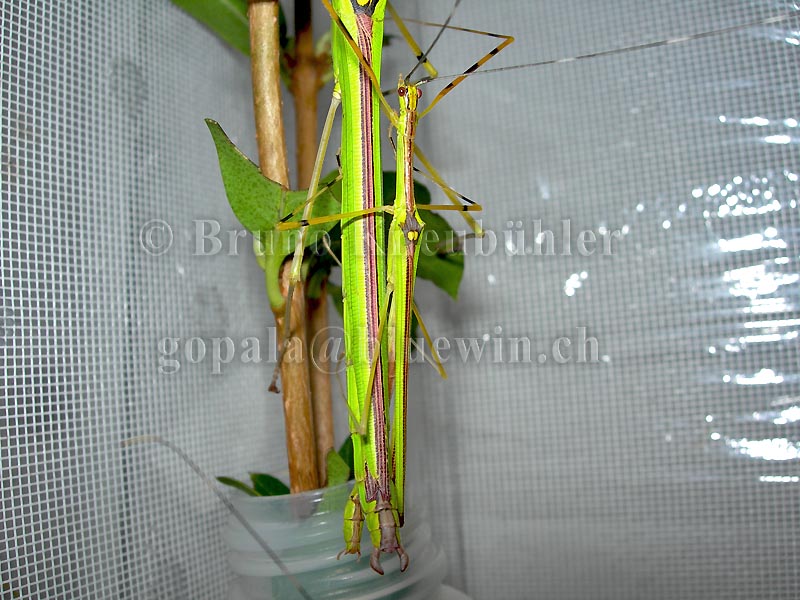
Genus
Species
Stock
Culture status
In culture
Foodplants
Privet (Ligustrum spp.)
Osmanthus burkwoodii
Lilac (Syringa vulgaris)
Breeding notes
(by Bruno Kneubuehler)
General Informations
- 2006 - first succsessful culture of this species by the Baudin brothers (France)
- 2007 - new culture stock by Bruno Kneubuehler
- 2008 - new culture stock has been distributed as Necroscia annulipes to other breeders
_________________
Origin
- Tapah Hills (Malaysia)
_________________
Females
- about 9 cm long with long feelers
- very colourful, mainly coloured in bright yellow-green, with a blue marking on the forewings and black lines over the body
- fully winged and capable to fly easily
- hind wings are beautifully bright pink when displayed
_________________
Males
- males are about 6,5 cm long long with very long feelers
- very colourful too, mainly coloured in bright yellow-green, with a blue marking on the forewings and black lines over the body
- wings are well developed and they are also capable to fly very well
- hind wings are bright pink too
_________________
Food Plants
- privet (Ligustrum sp) and Osmanthus burkwoodii
- O. burkwoodii belong to the same family as privet, namely Oleaceae. But it's leaves stay green all winter long, while privet leaves tend to get brown. Although Osmanthus leaves are quite hard, the nymphs were easily able to feed on this plant.
- in summer they will also accept lilac (Syringa vulgaris)
_________________
Eggs
- shaped like a carnassial tooth
- about 5 mm long
_________________
Breeding Notes
- incubation time is 5+ months at room temperature (20 - 23°C)
- stick the eggs into a substrate like peat for incubation, as females stick their eggs into the ground too. Do that carefully (!), with the pinpointed end first - so that the end with the lid is just on the level of the soil
- freshly hatched nymphs feed easily on privet (Ligustrum sp). Later on (when they were about L4) I have tranferred them to Osmanthus burkwoodii
- keep both nymphs and adults in a fairly airy cage with a permenantly wet paper towel on the bottom
- nymphs will mature in about 5-6 months
- both males and females can fly VERY well - thus watch your windows :)
- as mentioned above, females stick their eggs into some substrate. Actually they not just stick it into the soil (or whatever is there on the ground), they actually hammer them into the ground. Looks funny to watch this, but only for sleepwalkers
